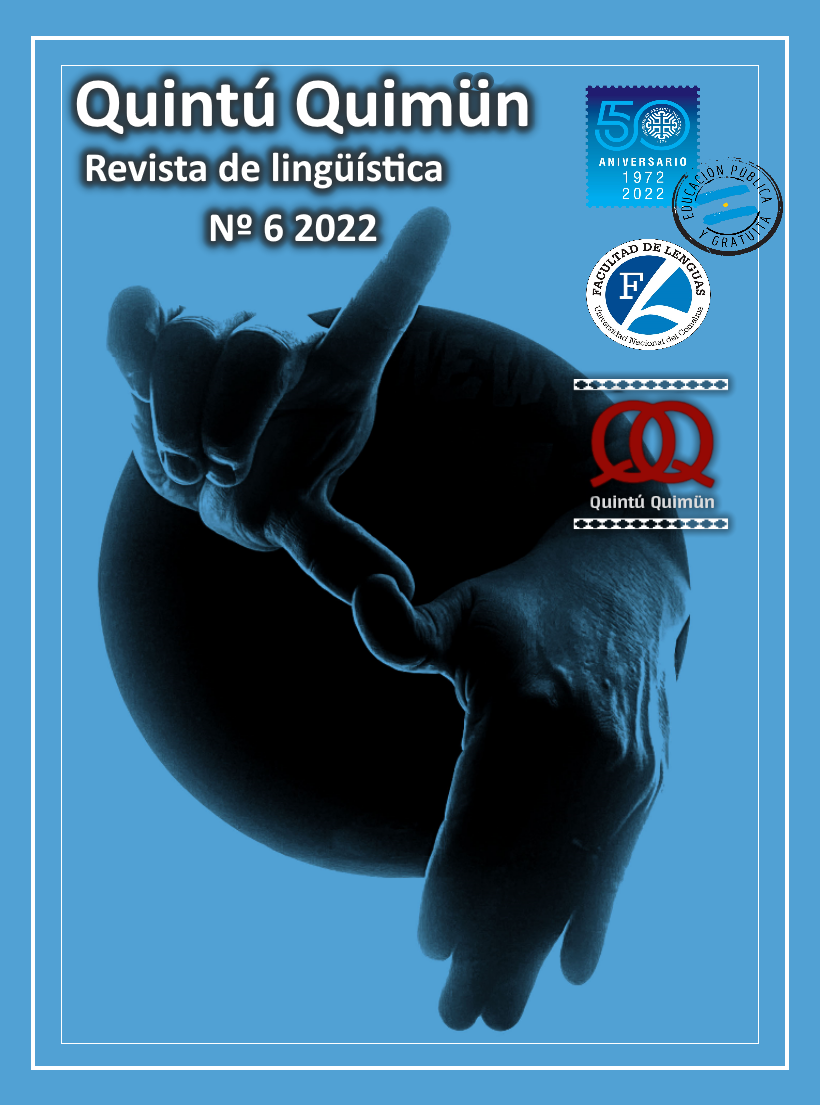Label me, label me much
Main Article Content
Abstract
Every scientific discipline has a set of terms and definitions to describe its object of study. These labels are fundamental both for the analysis and for the communication of results and the subsequent replication of a work methodology with other exponents of that object. The problem arises when the labels become confused with the object itself and begin to play a much more prominent role than the one desirable in Science, causing us to fall into the well-known statement that “the error is in the corpse, but not in Galen”. The following pages explore this problem in the field of linguistics. To that end, we dwell on the labels used for languages, for word classes and even on label for the word “word” itself.
Downloads
Article Details

This work is licensed under a Creative Commons Attribution-NonCommercial-ShareAlike 4.0 International License.
Los autores de los artículos publicados conservan los derechos de copyright.
Licencia de uso:

Creative Commons Atribución-NoComercial-CompartirIgual 4.0 Internacional.
References
Mare, María (2020). Clases de palabras y predicación. Reflexiones para la enseñanza. Revista de Lingüística y Filología, 46(1), 221-241. Doi: 10.15517/rfl.v46i1.41117.
Mendívil Giró, José Luis (2022). Deconstruyendo las funciones sintácticas. ReGROC IV, 20- 39. Doi: 10.5565/rev/regroc.62
Moreno Cabrera, Juan Carlos (2021). La clasificación de las lenguas. Madrid: Síntesis.
Alexiadou, Artemis, Hagit Borer & Florian Schäfer (eds.) (2014). The Syntax of Roots and the Roots of Syntax. Oxford: Oxford University Press.
Borer, Hagit (2005). In name only. Oxford: Oxford University Press.
Caha, Pavel (2018). Notes on insertion in distributed morphology and nanosyntax. En Lena Baunaz et. al. (eds.) Exploring Nanosyntax. New York: Oxford University Press, 57-87.
Chomsky, Noam (1957). Syntactic Structures. The Hague: Mouton.
Chomsky, Noam (1995). The Minimalist Program. Cambridge: MIT Press.
Chomsky, Noam (2000). Minimalist inquires: The framework. En Roger Martin, David Michaels y Juan Uriagereka (eds.) Step by step: Essays on minimalist syntax in honor of Howard Lasnik. Cambridge: MIT Press, 89-156.
Halle, Morris & Alec Marantz (1993). Distributed Morphology and Pieces of Inflection. En Ken Hale & Samuel Keyser (eds.) The view from Building 20. Cambridge: MIT Press, 111-176.
Harley, Heidi (2014). On the identity of roots. Theoretical Linguistics, 40(3/4), 225-276. Doi: 10.1515/tl-2014-0010
Jackendoff, Ray (2011). What is the human language faculty? Two views. Language, 87(3), 586-624. Doi: 10.1353/lan.2011.0063
Marantz, Alec (2001). Words and things. Manuscrito, MIT.
Mendívil Giró, José Luis (2019). La adaptación de las lenguas al entorno: una aproximación crítica. Glosema. Revista Asturiana de Lingüística, 1, 139- 175. Doi: 10.17811/glosema.1.2019.139-175
Moreno Cabrera, Juan Carlos (2014). El español hablado como lengua aglutinante y polisintética. En José María Santos Rovira (ed.) Ensayos de Lingüística Hispánica, Facultad de Letras: Universidad de Lisboa, 177-216.
Vanden Wyngaerd, Guido, Karen de Clercq & Pavel Caha (2021). Late insertion and Root Suppletion. ReVEL, edição especial, 19 (18), 81- 123.
